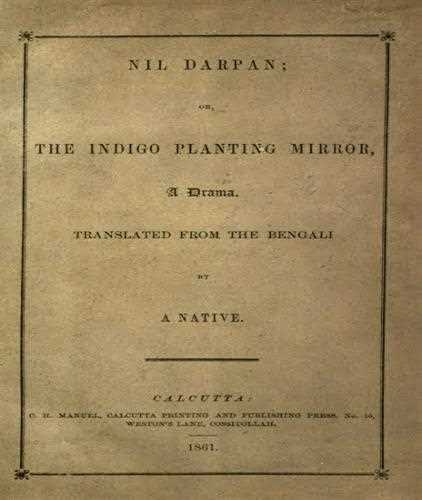"Neel-Darpan" is a Bengali play written by Dinabandhu Mitra in 1858. The play highlights the plight of the indigo farmers who were oppressed by the British colonial rulers in Bengal.
Indigo was a cash crop that was extensively cultivated in Bengal during the colonial period. The British East India Company made huge profits by exporting indigo to Europe. However, the cultivation of indigo was extremely exploitative and cruel. The British planters forced the Indian farmers to grow indigo on their land, instead of food crops. The farmers were paid very low wages, and were forced to give a large portion of their produce to the British planters as rent. The farmers were also made to work under inhumane conditions, and were subjected to various forms of physical and mental torture.
In "Neel-Darpan", Mitra portrays the plight of the indigo farmers through the character of Neelkanta, a farmer who is forced to cultivate indigo on his land by the British planters. Neelkanta is a representative of the thousands of farmers who were exploited and oppressed by the British colonial rulers in Bengal.
The play shows how the British planters used various tactics to force the farmers to cultivate indigo. They would threaten the farmers with violence, burn their crops, and even imprison them if they refused to grow indigo. The farmers were left with no choice but to comply with the demands of the British planters.
Mitra also shows how the indigo cultivation affected the lives of the farmers. The farmers were forced to give up their food crops to cultivate indigo, which led to widespread famine and starvation. Many farmers were unable to pay the high rents demanded by the planters, and were forced to sell their land and become laborers.
The play also highlights the resistance put up by the farmers against the British planters. The farmers formed a movement against the exploitation, and fought for their rights. The movement was led by a group of intellectuals and social activists, who used literature and art as a means to raise awareness about the issue.
